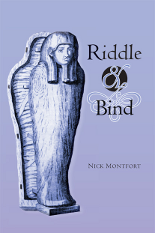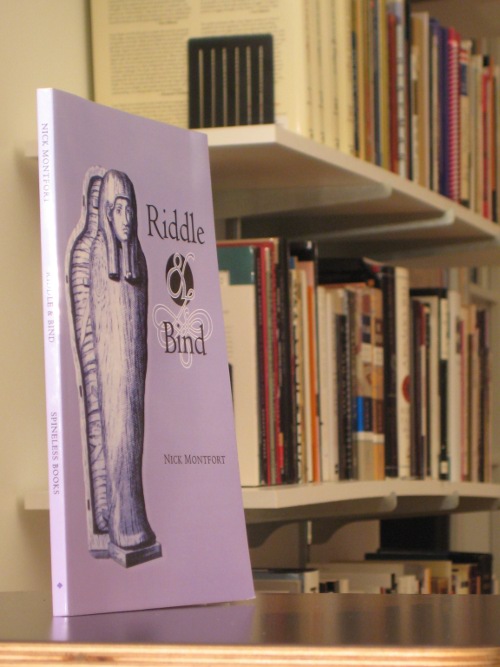I interviewed Joseph Tabbi, author of Cognitive Fictions and editor of electronic book review, about the Electronic Literature Directory project that he’s currently heading. I took over from Joe early this summer as president of the Electronic Literature Organization. The Directory, which has already had success in its “version 1” form, has been reworked to allow collaboratively-written and richer writing about e-lit work.

nm: Joe, what sorts of people are going to find something compelling in the Electronic Literature Organization’s new Directory?
jt: I imagine the majority of readers are going to be teenagers and college students, people who have come of age learning to read in different ways than you or I learned. You and I may have retrained our habits of attention with each new delivery device. But the current generation of readers likely started with web browsers, wikis, blogs, texting, sexting and so forth.
nm: What do you envision this project will offer when it’s – “completed” is perhaps the wrong word, but when we’ve had large-scale participation and significant coverage of e-lit?
jt: The renewal of a general audience for literary arts – the way that Grub Street writers and publishers turned newspaper and letter readers into an audience for novels. (But of course, e-lit does not, and surely won’t, look at all like nineteenth-century realist fiction.)
nm: What stage of the project are wehttp://deviantforms.wordpress.com/2010/07/21/eld-1-0-vs-2-0/ at now?
jt: We’ve got a sample of works and some model descriptions of works. We have a cohort of editors to build on that sample, and a programmer and graphic artist who will turn the current wrap into a designed interface. That will happen early next year. We’ve also got a number of prominent e-lit authors who are going in to ‘tag’ the works, which ought to expand the language we have for talking about works that in many cases will be sui generis. Others will be right in the mainstream of literary production.
(By “mainstream,” I mean antecedents like Oulipo’s processual writing, Musil’s conceptual writing without character or ‘qualities,’ the novel before Fielding and Richardson, and very likely the formulaic, generative epics in oral traditions.)
nm: The ELO had previously developed a directory with a different format and different sorts of listings. Can you tell me some about what you learned from that project, how the current one builds on it, and in what ways it’s trying to go beyond the “1.0” version?
jt: Now, as then, we have plenty of writing by women, people of color, writers whose first language is not English, and so forth. But there’s no need to divide all this up, at the start, into special-interest group-writing, the way it’s done at a Borders or Barnes & Noble. That’s how 1.0 was set up, but the idea here, in version 2.0, is not to impose top-down categories (however inclusive and open-minded the categorizers might imagine themselves to be): the thing is to use the low-level tagging (an affordance specific to networked media) as a way for semi-autonomous communities to elaborate their own vocabularies, their own favored works, and ultimately their own values.
Another difference – I learned that you need many, many editors, not a few. And you need to set things up so that a contributor who’s not an editor, not an e-lit author, and not anyone special – can feel comfortable drafting an entry and see it live the moment it’s submitted. If it’s not that easy, people won’t bother to write about works they have discovered. And if that happens, we’ll lose the chance to locate, cultivate, and renew a general literary readership.
nm: It’s clear that the Directory will benefit the reader who is seeking e-lit to read, seeking to learn about new and different forms of writing, and looking for critical perspectives. How will the Directory benefit the contributor? Why should people interested in different forms of e-lit want to write entries and take part in the Directory project?
My expectation is that the more people use it, the more people there will be who want to use it. We need to make better known the Directory’s common cause with other existing projects – directories of interactive fiction, the Siegen-based Directory of critical writing on e-lit, NT2’s directory of French e-lit, the Australian directory under development at the University of Western Sydney, and many, many others. A number of us, from the ELO board, will be in Sydney in December to discuss that particular co-development. But it has to be more than an exercise in mutual respect and swapping entries. We need to instantiate these affinities with a design that makes, for example, an Australian or an IF entry stand out as such. And we need to use the same community-building processes that are current in software development and so familiar to the next generation of readers.
nm: So, once someone does want to take part in the project, how can that person get involved and contribute?
jt: It depends I think on where people are coming from, whether they approach the field as a researcher/scholar, an author, or a general reader. Anyone can post a description of works they’ve discovered, comment on an existing post, or compose an alternative description. Those who have works of their own, can fill out a stub entry so that others can draft a description. And those who have a professional stake in the field can join the editorial workgroup, where they can participate directly in the project development and their entries will be credited as academic publications.
By bringing the scholars, authors, and audience this way into a single forum, maybe we can begin to change the current situation where intellectuals and creators talk only to themselves. At the least, those who read around in the directory should get a sense that literature is not a settled body of work but a field that’s in the making, and nothing’s stopping anyone from taking part in that.
I encourage readers to leave any questions you have about the Directory for me and/or Joe in comments.



 My new book – a book of poems entitled Riddle & Bind – has been published by
My new book – a book of poems entitled Riddle & Bind – has been published by 
